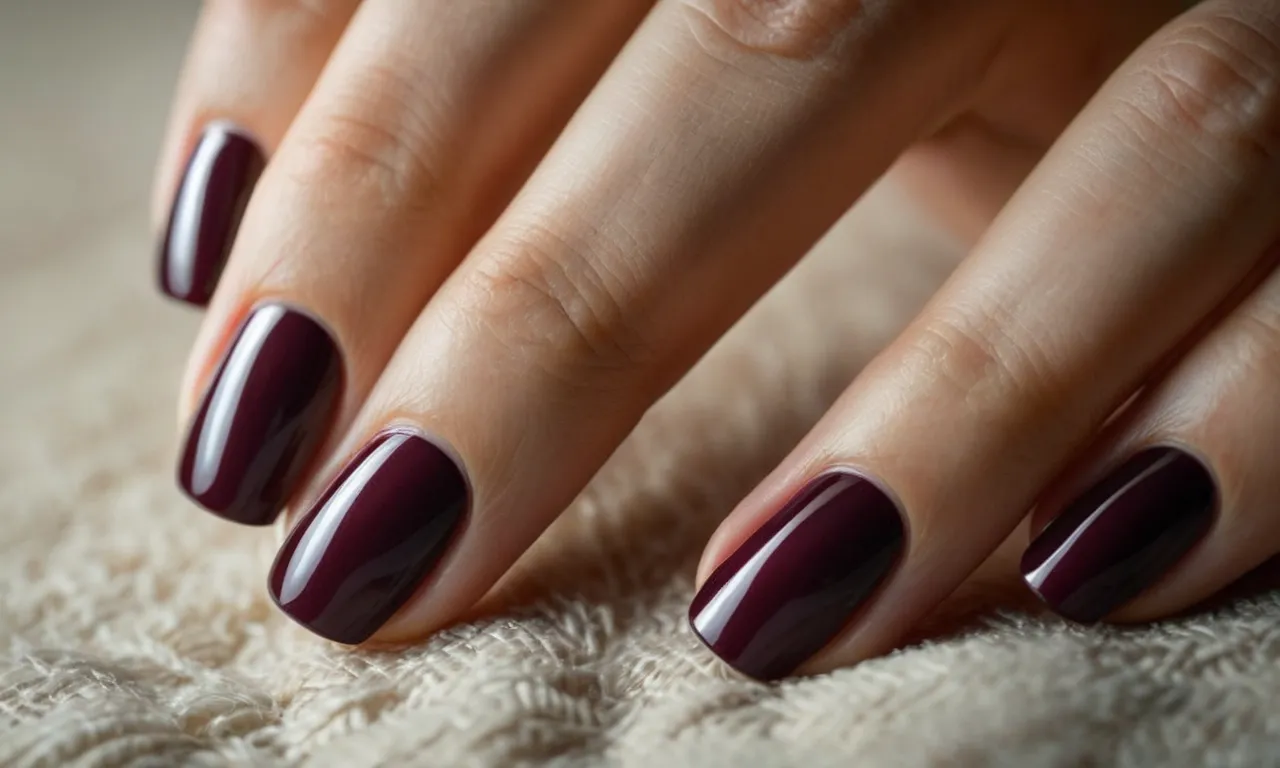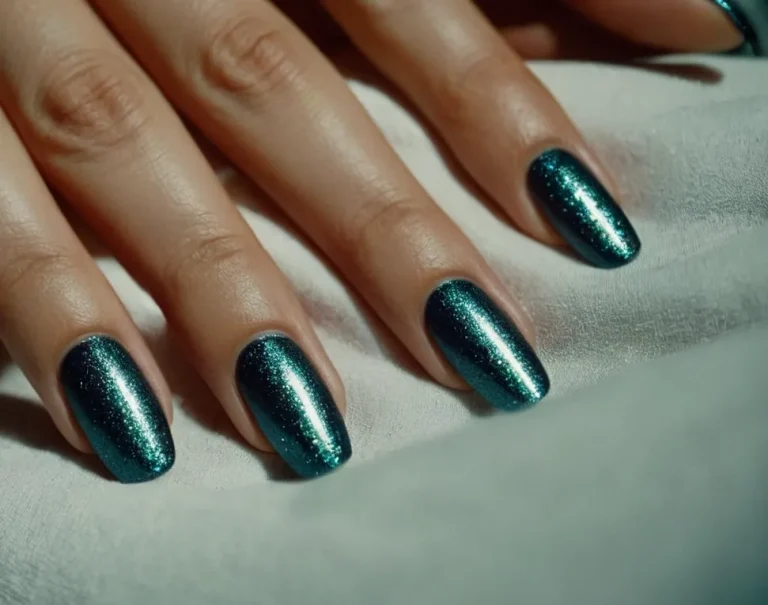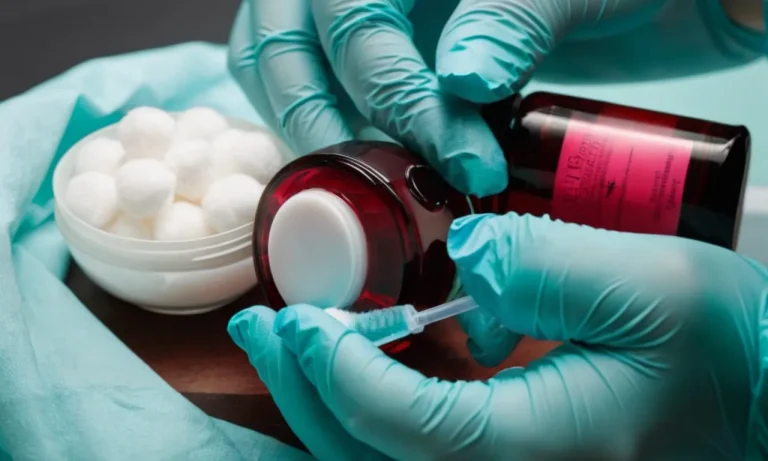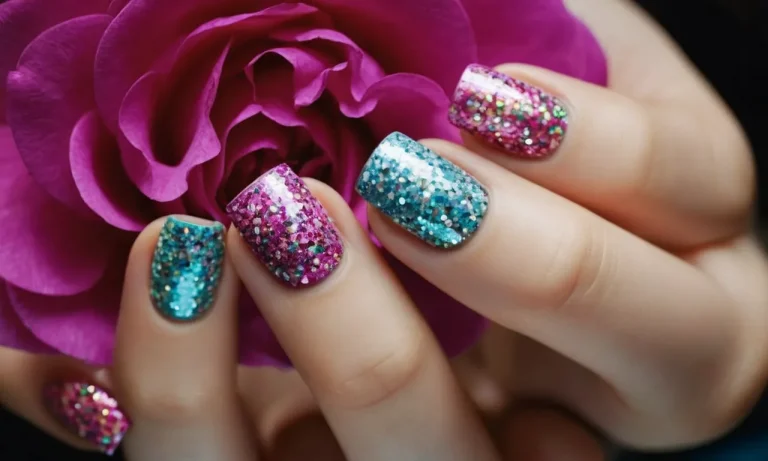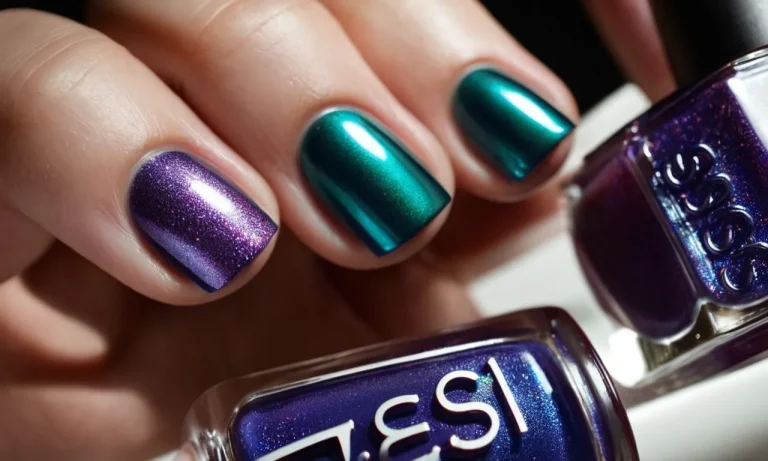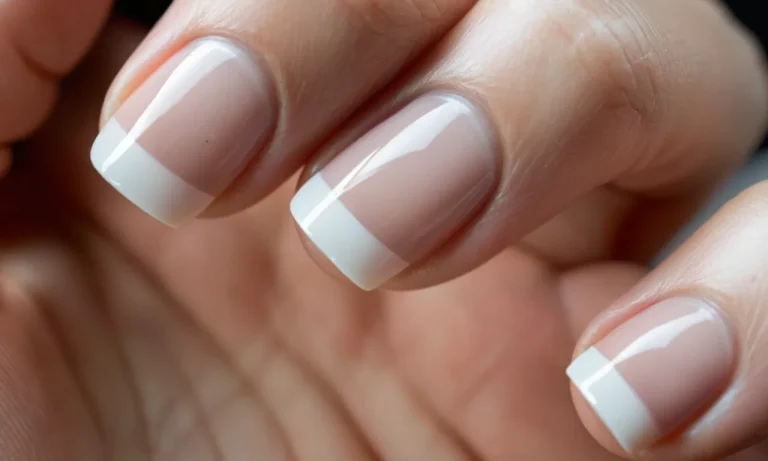The Easiest Nail Shape For Typing
Typing on a keyboard all day can be tough on your nails. With every click-clack of the keys, your nail beds take a beating. So what’s the best nail shape for typists who want to protect their digits?
If you’re short on time, here’s a quick answer: A short, rounded square is usually the easiest nail shape for typing. It provides just enough length for leverage while typing, without extra length that could lead to breakage.
In this comprehensive guide, we’ll look at the pros and cons of different nail shapes for typing. You’ll learn why certain shapes like squoval, oval, and coffin may not be ideal for heavy keyboard use. We’ll also cover tips for filing and caring for your nails to minimize typing damage.
The Ideal Nail Shape for Typing
Rounded Square
The rounded square nail shape is one of the most popular and versatile options for typists. With a squarish tip and slightly rounded corners, this style creates a clean, polished look while still allowing comfortable typing.
The straight edge along the tips means your nails won’t get in the way while typing, and the rounded corners help prevent snagging and breakage. Many office workers and frequent typists opt for a rounded square shape since it suits most workplace environments.
Squoval
Similar to a rounded square, the squoval nail has a squared-off tip and oval-shaped vertical edges. This shape is a great choice if you want the functionality of a square with a slightly softer look. The straight tip won’t hinder typing, while the oval sides create a more fluid, natural profile.
Squoval nails are strong, durable, and unlikely to chip or crack while typing. If you prefer nails that are shapely yet still functional, a squoval is a stylish option to consider.
Oval
With a continuously curved edge from base to tip, oval-shaped nails have an elegant, clean look. However, the rounded tips may not be ideal if you frequently type or use your hands for detailed work. The lack of a straight edge can cause nails to overlap each other, potentially slowing down typing speed and accuracy.
While beautiful on the hands, oval nails are prone to chipping and cracking under pressure. If you prioritize typing efficiency, oval nails may not be the best practical choice.
Almond
Almond nails have a sleek, uniform shape that is wider at the base and narrows to a softened point. While stylish, the pointed tip of an almond nail may hinder typing by reducing finger pad contact with the keys.
The pointed edges are also prone to snagging and breaking when doing intricate hand movements. However, a skilled nail technician can shape the tip to be less severe for a compromise between style and function.
With careful shaping and maintenance, almond nails can work for typists who want a slim, elongating look.
Coffin
With their straight edges and flat, squared-off tips, coffin nails (also called ballerina nails) are likely the least optimal shape for typing. The long, rigid tips drastically limit finger dexterity and the ability to feel and manipulate small objects like keys.
While coffin nails certainly make a bold style statement, they are impractical for jobs or tasks requiring nimble hand and finger movements. Unless you have an advanced phone or device with voice commands, coffin-shaped nails are difficult to type with efficiently.
For regular typists, more modest, flexible nail shapes are better suited for functionality.
How to File Square Nails for Typing
Make Them Short
Keeping square nails trimmed short is crucial for comfortable and efficient typing. As a general rule, nail tips should not extend past the fingertips when the fingers are held straight out. Overly long nails can cause you to hit multiple keys at once, leading to typing errors.
Experts at WikiHow recommend filing nails once a week to maintain a short, square shape that allows for accuracy when typing.
Round the Corners
Sharply pointed square nail corners can snag on keys during fast typing. Lightly rounding the corners with a nail file helps fingertips glide smoothly across keyboard keys without catching. The Miss Lauren Nails blog suggests using a fine-grain file in a gentle sawing motion rather than harsh back and forth rubbing to softly curve square corners.
An oval shape rounds out sharp corners while still keeping a squared look. For those desiring more angular nails, a “squoval” shape with slightly rounded edges combines the best aspects of square and oval shapes.
This shape allows for accuracy when typing while diminishing the risk of an unpleasant snag.
Smooth Rough Edges
Jagged edges or peeling layers on natural or acrylic nails can impede typing progress and feel unpleasant on keyboard keys. Use a fine-grit nail file or buffer to methodically smooth out any roughness along nail edges and tips.
Apply cuticle oil after filing to condition nails and cuticles, preventing further snags or tears.
Additionally, typists can apply a quality top coat or gel sealer following filing and buffing to fortify nails. The Allure recommends gel polish, which cures under UV light for an ultra-hard, protective shield. Both clear and colored polishes safeguard nails from cracks and chips that disrupt typing.
By mastering proper at-home nail filing techniques and using strengthening sealants, those with square nail shapes can continue typing easily. A once-weekly routine keeps nail length in check while rounding edges ensures a smooth glide across keyboard keys.
Caring for Your Nails Post-Typing
Use Cuticle Oil
Typing for long periods can really do a number on your cuticles. The constant friction against the keyboard can cause hangnails, dryness, and even cracking. That’s why it’s important to keep your cuticles hydrated with cuticle oil after prolonged typing sessions.
Simply apply a few drops of cuticle oil around each nail bed twice daily. The oil will nourish the skin and prevent peeling and irritation. Massage it in gently with circular motions to stimulate blood flow. Jojoba, vitamin E, and coconut oils are great natural ingredients to look for.
Using cuticle oil is an easy and affordable way to show your hardworking fingertips some TLC!
Take Biotin
Popping a biotin supplement can also help strengthen nails over time for all those eager typists out there. Biotin, a B complex vitamin, aids keratin production which is the protein that makes up your nails.
Multiple clinical studies have shown that taking 2.5 mg of biotin per day over at least 6 months can significantly improve nail thickness and reduce splitting and cracking. Along with making your nails more resistant to damage from typing, biotin can also stimulate hair growth and improve skin.
Just be sure to check with your doctor before starting any new supplement, especially if you’re taking other medications. With some patience and consistency, biotin can help reinforce your nails against wear and tear.
Wear Gloves
When all else fails, wearing fingerless gloves while typing can physically shield nails from impact. The padding can act as a cushion and absorb some of the pressure from striking the keys. Look for gloves made of smooth lightweight materials like cotton, spandex, or microfiber for maximum comfort and flexibility.
You can even apply moisturizer or cuticle oil before putting the gloves on to allow your skin and nails to soak up the hydration while you type. The gloves can be worn periodically when doing heavy typing work or for extra protection at night while sleeping.
Let those fingertips relax and recover inside some cozy gloves after a long day at the keyboard!
When to See a Professional
Damaged Nails
If you have nails that are cracked, split, peeling, or otherwise damaged, it’s a good idea to see a nail technician or dermatologist. Damaged nails can snag and tear more easily, leading to pain, infection, and further damage. Some common causes of nail damage include:
- Repeated manicures or pedicures that thin the nail plate
- Artificial nails that weren’t properly applied or removed
- Injury to the nail bed
- Skin conditions like eczema or psoriasis
- Fungal infections
A professional can help diagnose the cause and recommend tailored treatments like medicated creams, oral medications, or protective nail polish. Getting damaged nails treated early on can help prevent long-term problems.
Brittle Nails
Brittle nails that peel, split, or break easily can be frustrating to deal with. Brittle nails may have ridges or grooves and simply feel weaker than normal. Some underlying causes include:
- Age – nails tend to become more brittle with older age
- Genetics – some people inherit tendencies for brittle nails
- Medical conditions like anemia or thyroid issues
- Deficiencies in nutrients like protein, calcium, zinc, or biotin
- Harsh soaps, chemicals, or other substances that dry out the nails
- Repetitive wetting and drying of the nails
Seeing a dermatologist can help determine whether an underlying condition is behind your brittle nails. They may recommend dietary changes, vitamins/minerals, moisturizing creams, or medicated polishes to help strengthen nails.
Discolored Nails
Nails that are yellowed, blackened, or have white spots or streaks can also warrant seeing a professional. Some reasons for nail discoloration include:
- Fungal infections – a common cause of yellow/brown discoloration
- Bacterial infections – can lead to green nails
- Medications – some drugs cause white bands or spots
- Chemical exposure – may blacken or stain nails
- Trauma – can cause red blood spots or bruising
- Nail melanoma – pigmented skin cancer, requires urgent evaluation
A dermatologist can properly diagnose the cause of nail discoloration and provide appropriate treatment if needed. Leaving nail infections or nail melanoma untreated can have serious consequences. Early intervention leads to better outcomes.
Frequently Asked Questions
Do gel manicures help with typing?
Gel manicures can be great for typing! The gel polish creates a smooth, sturdy surface on your nails that glides easily over keyboard keys. Gel manicures also tend to be thinner than acrylics or dip powders, so they don’t get in the way as much when typing.
Just be sure to keep the length on the shorter side, and file the edges smooth, for the best typing experience. A neat, rounded shape is ideal.
What about acrylics or dip powder?
Acrylic and dip powder manicures tend to be thicker than gel polishes, so they may not be quite as typing-friendly. However, with the right shape and length, they can still allow you to type with ease. The key is keeping them short – a square or squoval shape is best.
Rough or overly long acrylic or dip nails can catch on the keys. It’s also important to keep the nails and cuticles well-groomed and filed, so there are no snags. If you go with a light, natural color instead of anything too dark or opaque, seeing the keys through your nails will be easier too.
Just be prepared to do more filing maintenance than with gel polish.
How often should I trim my nails for typing?
To keep your nails in optimal typing shape, it’s best to trim them every 2-3 weeks. Here are some signs it’s time for a trim:
- You can hear your nails clicking loudly on the keys
- Your nails are catching on the keys while typing
- Your nail tips extend beyond the tips of your fingers
- You have to angle your hands to avoid your nails hitting the keys
Aim to keep your nails short enough that you can type naturally and quickly without disruption. The shortest nail length that still covers your fingertips is ideal. Trimming your nails regularly will prevent breaks too. Use a nail file to smooth edges.
For those who type all day long, even weekly trims may be necessary to maintain great typing nails!
Conclusion
Typing all day doesn’t have to wreck your nails. With the right square nail shape and proper filing techniques, you can enjoy beautiful, strong nails.
Remember to keep your nail tips rounded and edges smooth. Biotin supplements and cuticle oil can also help strengthen nails prone to typing damage.
Don’t be afraid to trim your nails often to maintain the ideal squoval length. And see a professional if you notice any glaring nail issues.

